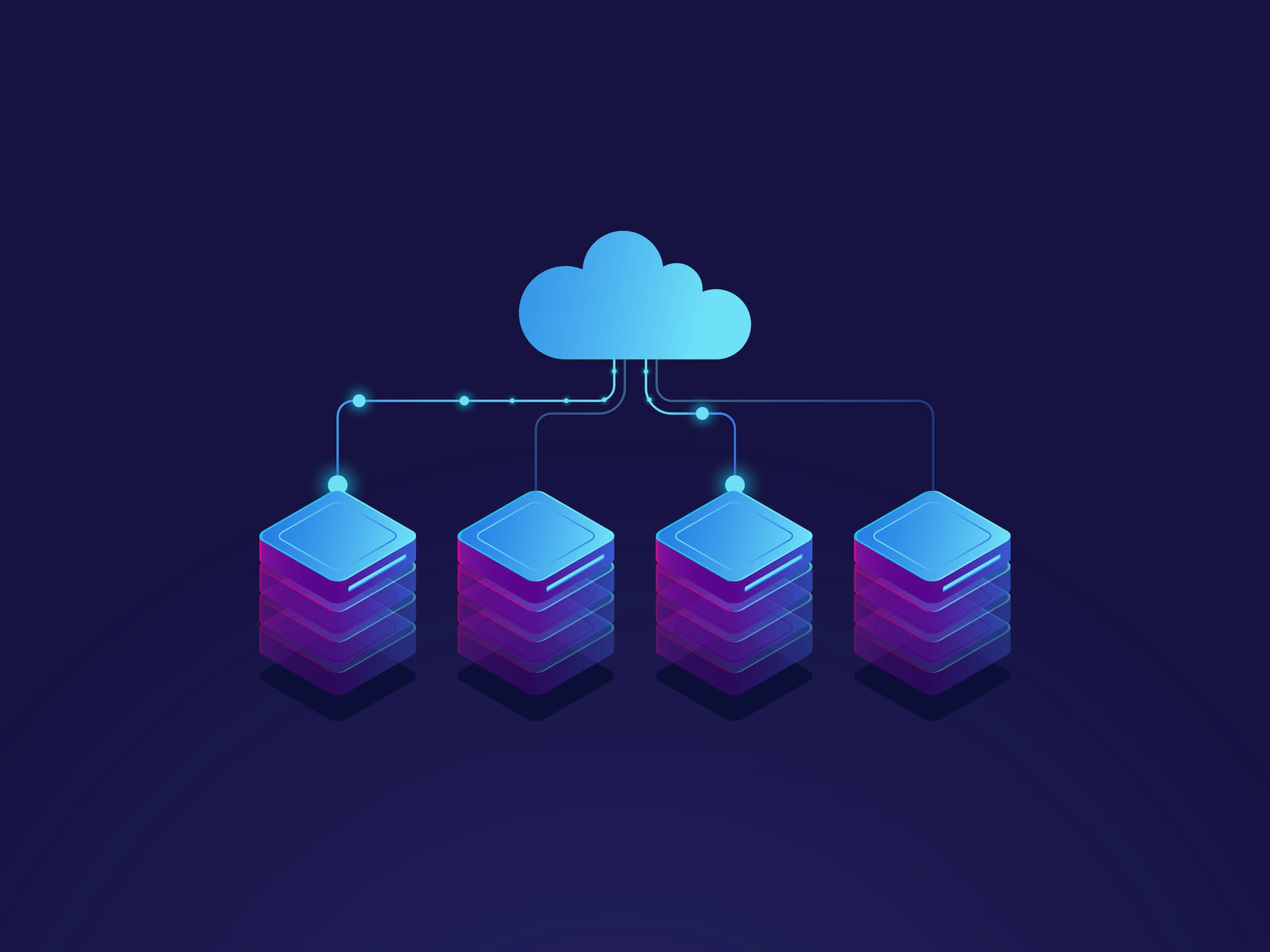9 Common Cloud Integration Challenges and How to Overcome Them?

- February 23, 2024
- Mohammed Nadeem Uddin
- 0
Integrating cloud services into your organization’s infrastructure can offer several benefits, such as scalability, flexibility, and cost-effectiveness. However, it also presents several challenges. Here are some common cloud integration challenges and strategies to overcome them:
1. Data Security and Compliance
With data being stored and accessed across potentially multiple cloud platforms and environments, the risk of data breaches and regulatory non-compliance increases. In transit and even at rest in the cloud, sensitive data needs to be shielded from unwanted access. Also, compliance with regulations such as GDPR, HIPAA, or industry-specific standards adds another layer of complexity.
Solution: Implement a comprehensive security strategy that includes encryption, access controls, and regular audits. Data encryption ensures that data remains protected even if unauthorized access occurs. Access controls restrict who can access sensitive data, and periodic security audits and compliance monitoring help identify vulnerabilities and ensure regulation adherence. Additionally, organizations should choose cloud providers with robust security measures and compliance certifications to ensure their data is stored and processed securely.
2. Integration Complexity
Legacy systems may need more modern APIs or compatibility with cloud platforms, making seamless integration difficult. Additionally, the sheer variety of cloud platforms further complicates integration efforts, as each may have proprietary interfaces and data formats. This complexity can lead to increased development time, higher costs, and potential disruptions to business operations.
Solution: Leverage middleware solutions like Integration Platform as a Service (iPaaS) provides pre-built connectors to connect disparate systems and automate integration workflows. APIs enable effective communication between different systems, so selecting cloud systems with interoperable APIs is essential. A service-oriented architecture (SOA) can also help simplify integration by breaking down complex systems into smaller, more manageable services. Additionally, establishing clear integration standards within the organization streamlines development efforts and ensures consistency.
3. Data Integration and Migration
Data integration and migration pose significant challenges when transitioning to the cloud because of the need to move data seamlessly. Legacy systems often use different data formats and protocols than modern cloud systems, complicating the integration process. The data to be migrated can be substantial, requiring careful planning to minimize downtime. It can result in data loss, corruption, or inconsistencies, impacting business continuity and user satisfaction.
Solution: Adopt a systematic approach that includes assessing existing data sources, mapping data flows, and implementing appropriate methodologies for data extraction, transformation, and loading (ETL). ETL tools or integration-as-a-service (IaaS) solutions can automate data migration, reducing manual effort and minimizing the risk of errors. Employing data replication techniques, such as database mirroring or log shipping, can ensure continuous synchronization between on-premises and cloud-based data repositories, enabling real-time data access and analysis. Additionally, prioritize data security during migration by encrypting sensitive data in transit and at rest and implementing access controls.4. Interoperability and Vendor Lock-In
Interoperability challenges arise when organizations adopt cloud services from different providers. Vendor lock-in occurs when organizations become dependent on a specific cloud provider, making it difficult to migrate to alternative solutions in the future. This dependency can limit flexibility, increase costs, and hinder innovation. Additionally, integrating services from multiple vendors may result in compatibility issues, making seamless data exchange between cloud platforms challenging.
Solution: Prioritize solutions that adhere to open standards and offer interoperable APIs, allowing seamless integration with other systems and platforms. Embracing containerization technologies such as Docker and Kubernetes can further promote portability by packaging applications and their dependencies into lightweight, portable containers running consistently across different cloud environments. Implementing a multi-cloud or hybrid cloud strategy enables organizations to diversify their cloud deployments across multiple providers, reducing reliance on any single vendor and mitigating the risk of vendor lock-in. Additionally, organizations should carefully evaluate cloud providers’ contractual terms, service-level agreements (SLAs), and exit strategies to ensure they retain control over their data and applications and have options for migrating to alternative solutions.
5. Performance and Latency
Performance and latency issues arise when integrating cloud services in different geographical regions or transferring large datasets between on-premises and cloud systems. Network latency can degrade application performance and user experience, particularly for real-time analytics or video streaming applications. Fluctuations in network performance and congestion can lead to more latency issues, impacting application responsiveness and throughput.
Solution: Optimize network configurations and deliver content closer to end-users, reducing the distance data travels and minimizing latency. Edge computing technologies distribute computation and data processing closer to the edge of the network, further reducing latency by minimizing round-trip times between clients and servers. Implementing load balancing and auto-scaling mechanisms helps distribute workloads efficiently across multiple instances, ensuring optimal resource utilization and minimizing latency spikes during periods of high demand. Conduct performance testing and monitoring to identify bottlenecks and optimize application and network configurations for improved performance.
6. Cost Management
Cloud integration costs can escalate rapidly without proper oversight and optimization. Cloud providers charge for resource usage based on factors such as computing, storage, and data transfer, making it difficult to predict costs, especially in dynamic cloud environments. Organizations may overspend on underutilized resources without effective cost-tracking and optimization strategies, leading to cost overruns and lower ROI. Additionally, the complexity of cloud pricing models and the need for more visibility into usage patterns can make it challenging to identify cost-saving opportunities and optimize resource allocation.
Solution: Implement robust cost tracking and optimization strategies that include monitoring cloud usage, analyzing spending patterns, and identifying opportunities for cost reduction. Cloud management platforms and cost optimization tools can provide real-time visibility into resource usage and spending, helping you identify inefficiencies and take corrective actions promptly. Automation techniques like auto-scaling and rightsizing can minimize spending by dynamically adjusting resource allocation based on workload demands. Additionally, organizations should leverage cloud provider discounts, such as reserved or spot instances, to further reduce costs and optimize their cloud spending. Conduct regular cost reviews and audits to assess the effectiveness of cost management strategies and identify improvement areas.7. Governance and Control
Achieving centralized governance can be challenging in large organizations with multiple teams adopting cloud services independently. Without clear policies, roles, and responsibilities governing cloud usage, there’s a risk of resource sprawl, security vulnerabilities, and compliance breaches. Additionally, ensuring consistent enforcement of governance policies across various cloud services further complicates the matter.
Solution: Establish clear policies, guidelines, and cloud adoption and usage standards. This includes defining roles and responsibilities, establishing access controls, and implementing mechanisms for monitoring and enforcing compliance with regulatory requirements and internal policies. Adopting tools that provide centralized control over cloud resources can help streamline governance processes. These platforms enable organizations to track usage, manage access permissions, and enforce policies across multiple cloud environments from a single interface. Conduct routine evaluations and audits to ensure governance guidelines are followed.
8. Scalability and Performance
Designing scalable architectures and optimizing performance in dynamic cloud environments can be complex. Inadequate capacity planning and resource provisioning can lead to performance bottlenecks, downtime, and increased costs during periods of peak demand. Additionally, organizations may over-provision resources, resulting in excess spending and inefficient resource utilization.
Solution: Design cloud architectures with scalability in mind, leveraging auto-scaling capabilities and distributed architectures to dynamically adjust resources based on workload demands. Load balancing mechanisms distribute incoming traffic across multiple servers or instances, preventing any single component from becoming a bottleneck. Continuous performance monitoring is essential for identifying performance bottlenecks, optimizing resource configurations, and maximizing application performance. Performance and stress testing tools can help validate scalability and identify potential performance limitations before deployment.
9. Change Management
Resistance to change, low awareness, and cultural inertia can impede cloud adoption efforts and prevent realizing benefits such as agility, innovation, and cost savings. Traditional organizational structures may need to align with the principles of cloud computing, leading to friction and inefficiencies. It would help if you fostered a culture of collaboration and continuous learning to leverage cloud technologies effectively and enable digital transformation.
Solution: Prioritize communication, education, and stakeholder engagement to build awareness and support for cloud adoption initiatives. Leadership buy-in and sponsorship are crucial for driving cultural change and promoting a cloud-first mindset. Establishing cross-functional teams enables employees from different departments to work together towards common goals and share knowledge and best practices. Embracing agile methodologies and DevOps practices encourages experimentation, iteration, and rapid deployment of cloud-based solutions. Additionally, providing training opportunities for employees helps them acquire critical cloud skills and contributes to cloud integration efforts.
Conclusion

Services
Products
Company
Copyright © 2024 Rite Software Solutions & Services LLC. All rights reserved.



